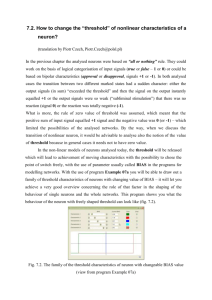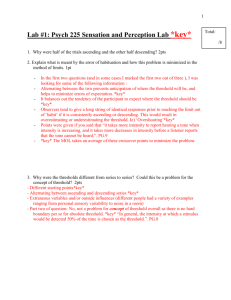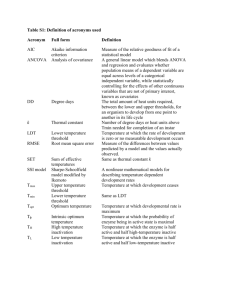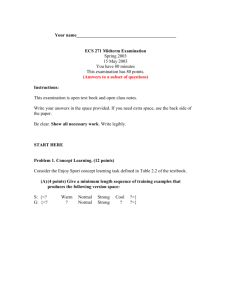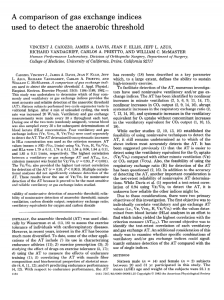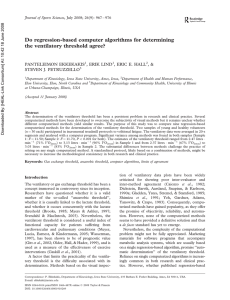Exercise Ventilation and Blood Lactate Questions
advertisement
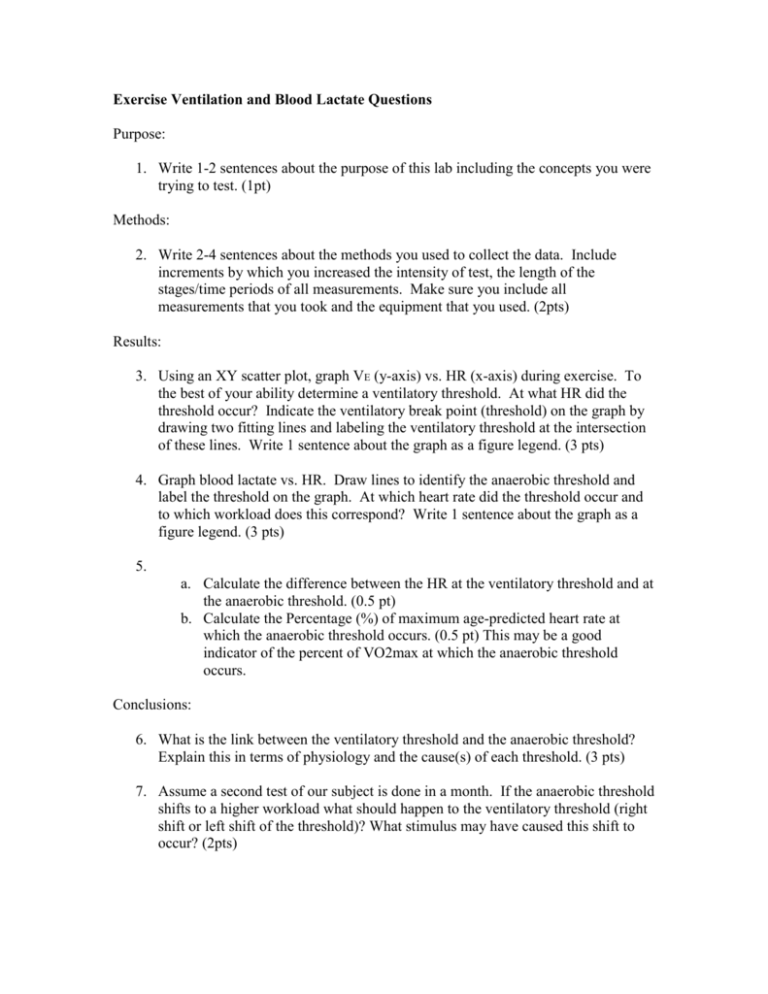
Exercise Ventilation and Blood Lactate Questions Purpose: 1. Write 1-2 sentences about the purpose of this lab including the concepts you were trying to test. (1pt) Methods: 2. Write 2-4 sentences about the methods you used to collect the data. Include increments by which you increased the intensity of test, the length of the stages/time periods of all measurements. Make sure you include all measurements that you took and the equipment that you used. (2pts) Results: 3. Using an XY scatter plot, graph VE (y-axis) vs. HR (x-axis) during exercise. To the best of your ability determine a ventilatory threshold. At what HR did the threshold occur? Indicate the ventilatory break point (threshold) on the graph by drawing two fitting lines and labeling the ventilatory threshold at the intersection of these lines. Write 1 sentence about the graph as a figure legend. (3 pts) 4. Graph blood lactate vs. HR. Draw lines to identify the anaerobic threshold and label the threshold on the graph. At which heart rate did the threshold occur and to which workload does this correspond? Write 1 sentence about the graph as a figure legend. (3 pts) 5. a. Calculate the difference between the HR at the ventilatory threshold and at the anaerobic threshold. (0.5 pt) b. Calculate the Percentage (%) of maximum age-predicted heart rate at which the anaerobic threshold occurs. (0.5 pt) This may be a good indicator of the percent of VO2max at which the anaerobic threshold occurs. Conclusions: 6. What is the link between the ventilatory threshold and the anaerobic threshold? Explain this in terms of physiology and the cause(s) of each threshold. (3 pts) 7. Assume a second test of our subject is done in a month. If the anaerobic threshold shifts to a higher workload what should happen to the ventilatory threshold (right shift or left shift of the threshold)? What stimulus may have caused this shift to occur? (2pts)

